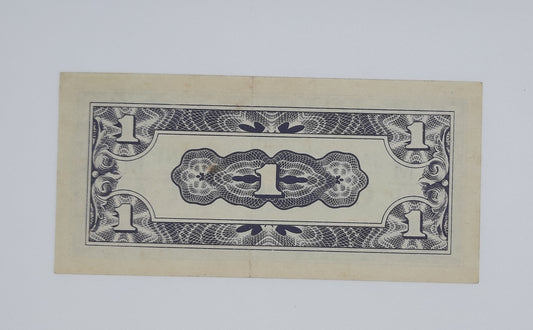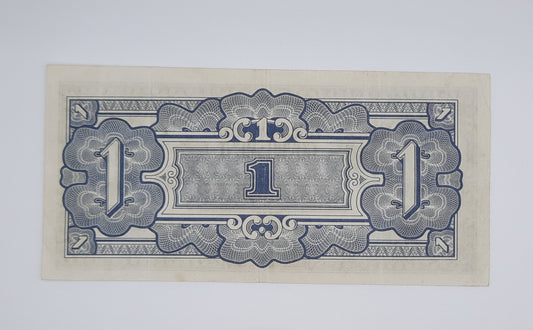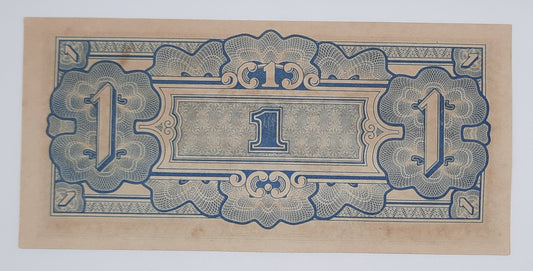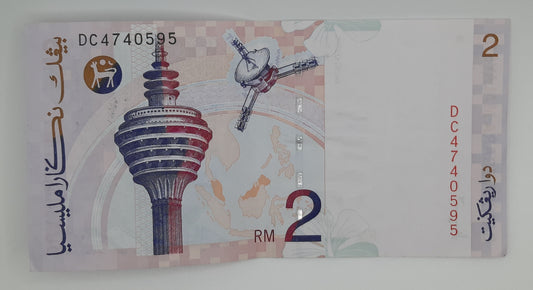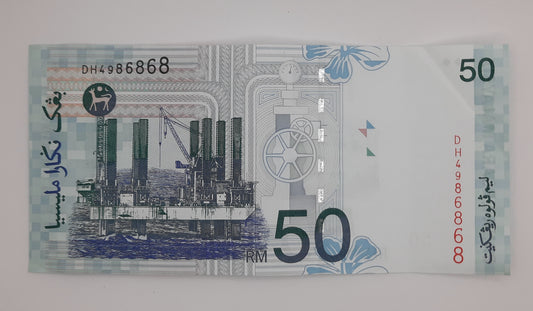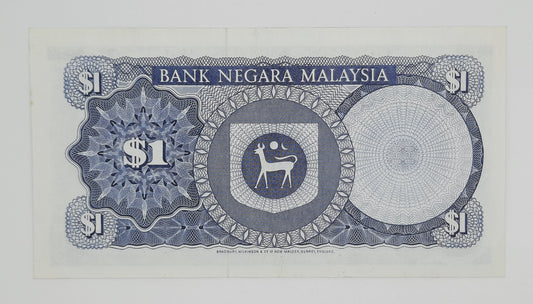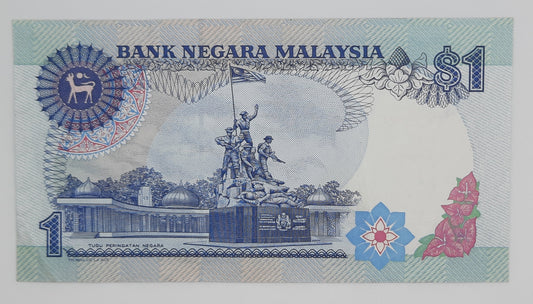Look up Country, Denomination or Year
-
2000 Bank Negara Malaysia - 1 (One) Malaysian Ringgit Banknote Serial NO. AAV 6931151 P-39
Vendor:notescounterRegular price £1.19 GBPRegular priceUnit price / per -
1942 Malaya, The Japanese Government - 1 Cent Banknote P-M1b MAD
Vendor:notescounterRegular price £2.50 GBPRegular priceUnit price / per -
1942 Malaya, The Japanese Government - 5 Cents Banknote P-M2a MT
Vendor:notescounterRegular price £2.50 GBPRegular priceUnit price / per -
1942 Malaya, The Japanese Government - 1 Dollar Banknote P-M5c MO
Vendor:notescounterRegular price £2.50 GBPRegular priceUnit price / per -
1942 Malaya, The Japanese Government - 1 Dollar Banknote P-M5c MO
Vendor:notescounterRegular price £1.99 GBPRegular priceUnit price / per -
1996 Bank Negara Malaysia - 2 (Two) Malaysian Ringgit Banknote Serial NO. DC 4740595 P-40
Vendor:notescounterRegular price £1.39 GBPRegular priceUnit price / per -
1999 Bank Negara Malaysia - 50 Malaysian Ringgit Banknote P-43c
Vendor:notescounterRegular price £12.49 GBPRegular priceUnit price / per -
1972 Bank Negara Malaysia - 1 (One) Malaysian Ringgit Banknote Serial NO. H86 100386 P-7
Vendor:notescounterRegular price £4.99 GBPRegular priceUnit price / per -
1986 Bank Negara Malaysia - 1 (One) Malaysian Ringgit Banknote Serial NO. HD 9826606 P-27
Vendor:notescounterRegular price £2.29 GBPRegular priceUnit price / per -
2000 Bank Negara Malaysia - 1 (One) Malaysian Ringgit Banknote Serial NO. AEZ 8241681 P-39b
Vendor:notescounterRegular price £1.19 GBPRegular priceUnit price / per -
1997 Bank Negara Malaysia - 10 (Ten) Malaysian Ringgit Banknote Serial NO. EA 5173592 P-42
Vendor:notescounterRegular price £2.69 GBPRegular priceUnit price / per -
1989 Bank Negara Malaysia - 10 (Ten) Malaysian Ringgit Banknote Serial NO. RK 0084295 P-29
Vendor:notescounterRegular price £8.39 GBPRegular priceUnit price / per -
1996 Bank Negara Malaysia - 2 (Two) Malaysian Ringgit Banknote Serial NO. CA 1791697 P-40
Vendor:notescounterRegular price £0.89 GBPRegular priceUnit price / per -
1986 Bank Negara Malaysia - 1 (One) Malaysian Ringgit Banknote Serial NO. EF 1429140 P-27
Vendor:notescounterRegular price £1.39 GBPRegular priceUnit price / per -
2011 Bank Negara Malaysia - 1 (One) Malaysian Ringgit Banknote Serial NO. BD 8724700 P-51
Vendor:notescounterRegular price £0.99 GBPRegular priceUnit price / per
Collection: Malaysia
Malaysian Banknotes: History, Evolution, and Design Changes
The Malaysian ringgit (MYR) is the official currency of Malaysia, introduced in 1967 under Bank Negara Malaysia (BNM). Since then, the nation's banknotes have undergone multiple transformations to enhance security, durability, and cultural representation.
Early Currency & Colonial Influence
Before the establishment of Malaysia, various forms of currency were used, including gold coins, tin ingots, and banknotes from the British-administered Straits Settlements. After independence in 1957, Malaysia took steps to develop its own monetary system.
The Introduction of the Malaysian Ringgit
In 1967, Malaysia issued its first national banknotes, initially referred to as the "Malaysian dollar." In 1975, the name "ringgit" was officially adopted. These banknotes featured Malaysia's first King, Tuanku Abdul Rahman, and national motifs that symbolized economic progress.
Key Banknote Series & Design Changes
First Series (1967-1972) – Featured basic security features and traditional designs highlighting national identity.
Second Series (1982-1989) – Introduced vibrant colors and upgraded security elements like watermarks and micro-printing.
Third Series (1996-1999) – Enhanced banknote security with stronger anti-counterfeiting measures and modernized designs.
Fourth Series (2012-Present) – Incorporates polymer notes for durability and advanced security features like color-shifting ink, 3D security threads, and complex holograms.
Modern Advancements & Sustainability
Malaysia has embraced technological advancements in its currency, including polymer substrates to improve longevity and security technologies to combat counterfeiting. Contemporary designs celebrate Malaysia’s diverse heritage, architecture, and natural beauty, reinforcing national pride.



